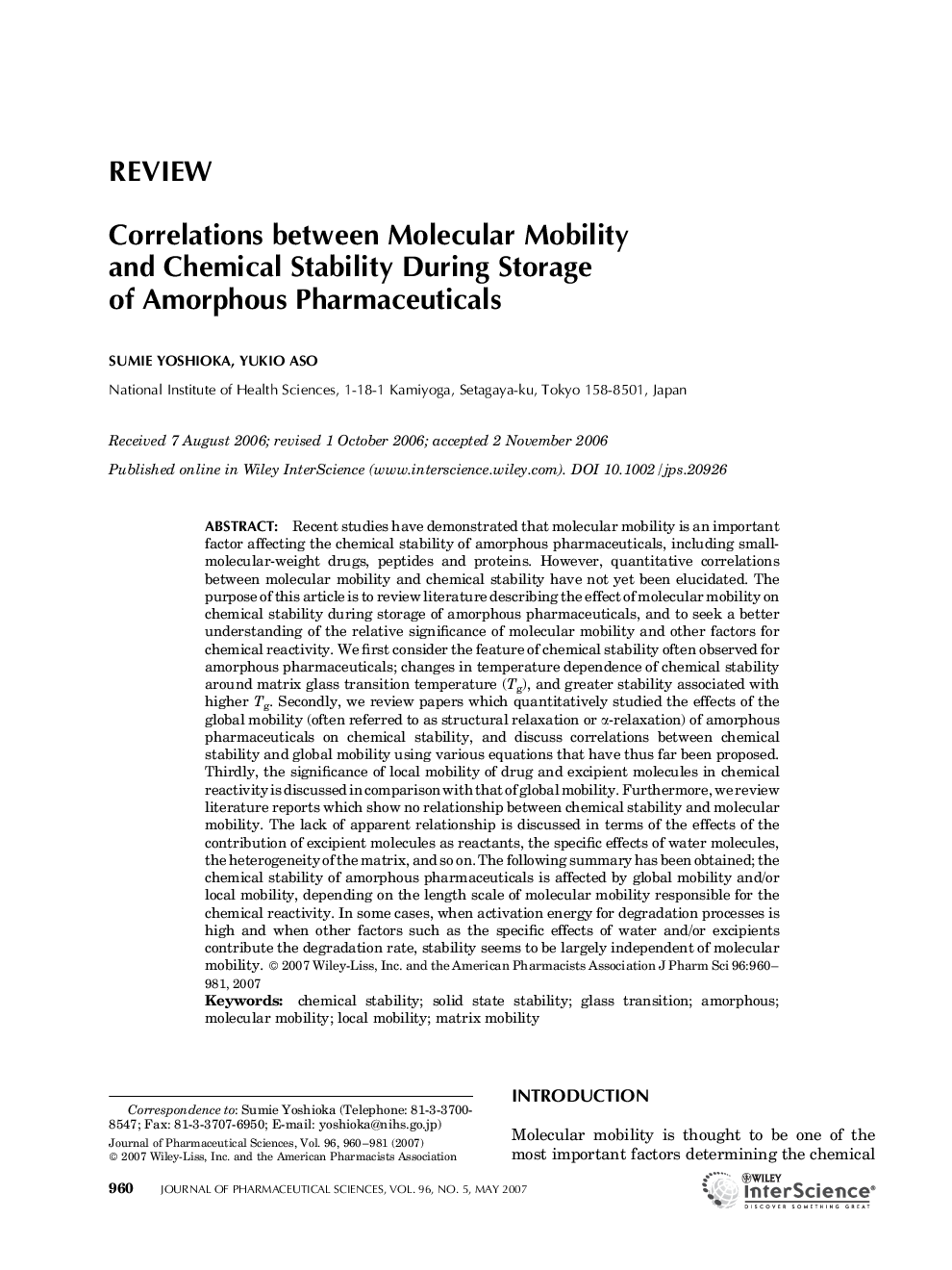| کد مقاله | کد نشریه | سال انتشار | مقاله انگلیسی | نسخه تمام متن |
|---|---|---|---|---|
| 2487675 | 1114428 | 2007 | 22 صفحه PDF | دانلود رایگان |

ABSTRACTRecent studies have demonstrated that molecular mobility is an important factor affecting the chemical stability of amorphous pharmaceuticals, including small-molecular-weight drugs, peptides and proteins. However, quantitative correlations between molecular mobility and chemical stability have not yet been elucidated. The purpose of this article is to review literature describing the effect of molecular mobility on chemical stability during storage of amorphous pharmaceuticals, and to seek a better understanding of the relative significance of molecular mobility and other factors for chemical reactivity. We first consider the feature of chemical stability often observed for amorphous pharmaceuticals; changes in temperature dependence of chemical stability around matrix glass transition temperature (Tg), and greater stability associated with higher Tg. Secondly, we review papers which quantitatively studied the effects of the global mobility (often referred to as structural relaxation or α-relaxation) of amorphous pharmaceuticals on chemical stability, and discuss correlations between chemical stability and global mobility using various equations that have thus far been proposed. Thirdly, the significance of local mobility of drug and excipient molecules in chemical reactivity is discussed in comparison with that of global mobility. Furthermore, we review literature reports which show no relationship between chemical stability and molecular mobility. The lack of apparent relationship is discussed in terms of the effects of the contribution of excipient molecules as reactants, the specific effects of water molecules, the heterogeneity of the matrix, and so on. The following summary has been obtained; the chemical stability of amorphous pharmaceuticals is affected by global mobility and/or local mobility, depending on the length scale of molecular mobility responsible for the chemical reactivity. In some cases, when activation energy for degradation processes is high and when other factors such as the specific effects of water and/or excipients contribute the degradation rate, stability seems to be largely independent of molecular mobility.
Journal: Journal of Pharmaceutical Sciences - Volume 96, Issue 5, May 2007, Pages 960–981